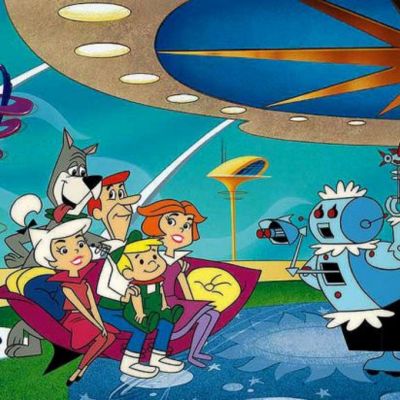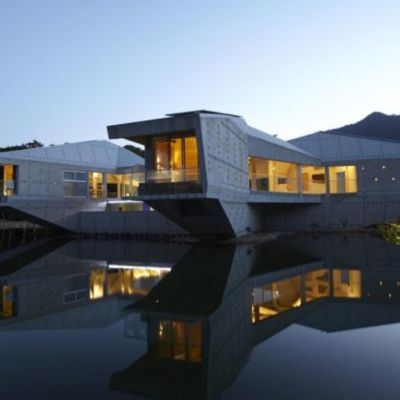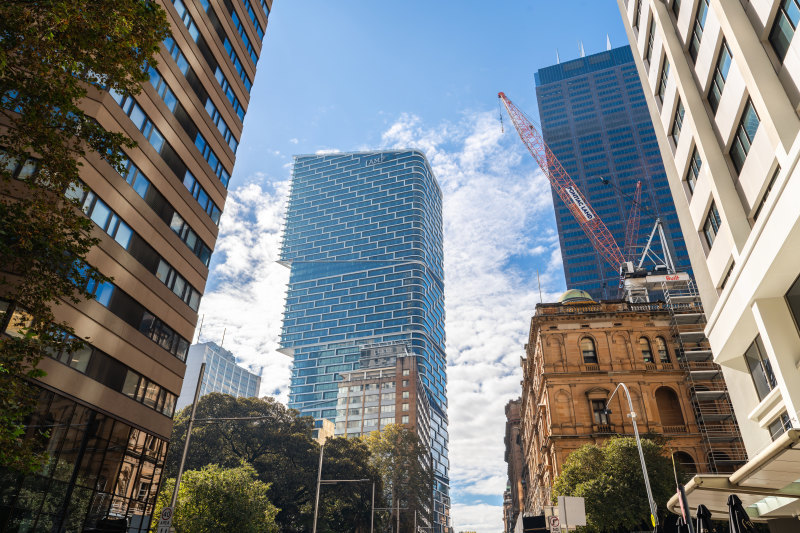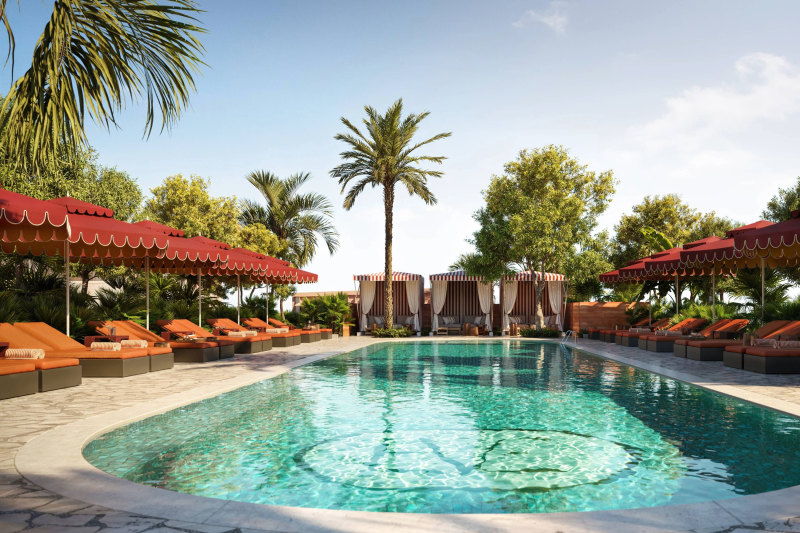Rotating orb designed to sit under the Hollywood sign wins house of the year competition
It looks like a meteor that crashed to earth but this irregular blob is actually a house design that has just won an architecture competition for innovation.
The otherworldly project named Ambivalent House rotates 360 degrees on an axis above the ground and is covered in solar energy panels and tiny porthole windows.
It was named as the winner of architectural-research group Arch Out Loud‘s “House of the Future” competition, where the expert jury complimented its “continual transformation … futuristic aesthetic … and cinematic view adding to the landscape”.
If it were to be built, the house would sit underneath Los Angeles’ iconic Hollywood sign on land that has been offered up by the Last house on Mulholland organisation – though it looks more like a prop from a Hollywood film than a family home.
In its winning proposal LA-based firm Hirsuta said it wanted the house to complement the strangeness of the landscape in a way that was unique and not overpowering.
“This neighbourhood surely ranks among the strangest in Los Angeles: a natural landscape that seems both near and far, the world-famous sign that happened by accident, a gigantic radio tower, and coyotes.
“Strangest of all are the people. In a case like this it seems best not to measure against any of this context directly or on its terms, as if to compete with the sign with yet another sign.”
The competition, which received more than 500 entries, asked architects to submit concepts for a single family home that had environmentally friendly technology and boldly used the site.
“The idea for a competition came from [the site’s owner] Steve recognising that such a prominent location needs a story, and its design should make a statement beyond another luxury home in the Hollywood Hills,” says Arch Out Loud’s Nick Graham.
“The location can serve as a platform and its architecture a precedent for sustainability, future lifestyle, and iconic architecture.”
If this design gives us insight into the future of architecture, it’s going to be vastly different from our homes now.
The scale-like skin on the outside of the home is functional as well, providing enough solar energy to power the house, meaning it could go off the grid.
Above the basement on the ground floor is a circular kitchen in the centre and what looks to be a bedroom next to the staircase.
On the second floor is an enormous open-plan living room while the top floor has a rooftop terrace, which would show different views as the house rotates 360 degrees in the space of a year.
But is the design too out there and ambitious to ever get built?
Graham said there aren’t plans for construction yet. “It may be the realisation of a particular proposal, or it may be a combination of ideas that were submitted to the competition,” he said.
The owner’s choice award was given to Studio di Architettura for its “the Eclipse” project, a perfect glass circle that spans four storeys.
We thought you might like
States
Capital Cities
Capital Cities - Rentals
Popular Areas
Allhomes
More









